Author’s note: This article was originally posted at Feasta.org on June 9, 2021.
Soon after I posted an article about a cyberattack on an oil and gas pipeline on the East Coast of the US, there was a second cyberattack on the world’s largest meat producer, a company called JBS.
First fossil fuels and now meat; maybe it’s just a coincidence that these cyberattacks targeted two of the most climate destructive industries. Or maybe the biggest and most vulnerable parts of the economy also happen to be the most carbon-intensive. As a Guardian article notes,
“Every year over 9 billion land animals are slaughtered in the United States…industrial agriculture contributes 14% of global greenhouse gas (GHG) emissions. Cows make up 41% of that, and the United States is home to just under 100 million of them.”
Reducing our dependence on them will require major changes in consumer buying habits, which will be resisted by their politically-powerful industries. Republican critics of the Green New Deal have latched on to the slogan “AOC wants to take away your hamburgers.”
Unfortunately, that attack could resonate in a country where Americans consume an average of over 220 pounds of meat each year. At the height of the COVID-19 pandemic shutdown, then-President Trump signed an Executive Order to keep meat and poultry processing facilities open, declaring meat production as an “essential” industry and forcing workers back into unsafe conditions. At the time, the aggressive order in regards to meat production stood in contrast to the delayed and reluctant use of the Defense Production Act to provide Personal Protective Equipment to frontline health care workers. Later in the year, FoodDive.com estimated about 20,000 meat industry workers were infected by COVID-19 through November 16, 2020 resulting in dozens of deaths.
The cyberattack on JBS closed several North American meat packing operations for a few days. U.S. meatpackers slaughtered 22% fewer cattle than a week earlier and 18% less than a year earlier, according to estimates from the U.S. Department of Agriculture. Prices of some U.S. beef jumped more than 1%, the USDA said.
Luckily, consumers have the option of avoiding such costs by reducing their meat intake and buying meat alternatives, including newer products such as Beyond Beef and Impossible Burger. The Guardian article states, “Compared with conventional meat, clean meat generates 96% less GHG emissions, and uses 99% less land and up to 96% less water.”
And then there is the systemic view, advocated by FEASTA, to try to include the large social and environmental costs (which economists refer to as “externalities”) into ecologically impactful products such as meat. About 15 years ago FEASTA proposed the Cap and Share concept to limit supply (of GHG emissions from fossil fuels), and then provide the newly valuable “shares” under the cap to people, or by auctioning permits and returning the funds to people to help them deal with the rising prices. A conceptual Cap and Share for Meat could function as proposed on the Diet Share website, which I set up several years ago.
At the top of that webpage, I included a disclaimer for worried meat eaters:
“Dear meat eaters: Don’t be alarmed. You can still eat meat. You will just have to pay an additional cost for the environmental impact that it is causing. We all have to work together to solve these large-scale, planetary problems. You don’t have to change your personal eating habits, but you will have to take responsibility for additional impacts if they are above the average amount in your jurisdiction, and your demand for this scarce resource will help contribute to solving these problems in an equitable way”
Here’s how it could work: A jurisdiction would set an overall limit (or “cap”) on the per capita consumption of meat. Households are provided a base allocation to cover their needs, which could be denominated in grams or pounds, and reside on a debit card. The allocation could be used to purchase meat at supermarkets or other vendors. Jurisdictions would have to determine how to handle meat purchased at restaurants, or if fast food restaurants would be treated differently from sit down restaurants. Residents such as vegetarians who know they will not need their allocation could sell some or all of it to their neighbors via an electronic marketplace, which could be run by the local or state government, or by online companies set up for the purpose. Those who exceed their allocation must buy shares from those who use less. At the end of the year, unused portions under the cap could be “retired” or used by local jurisdictions to fund healthy eating campaigns, health care or other programs. The following year, the cap is reduced by a certain agreed-upon amount, and the process starts over.
As I noted in my article on the recent pipeline cyberattack, social justice and inequality issues should be expected as supplies decline “on the downslope” of the bell curve of 21st century industrial capitalism. It should be noted that the average person in the industrialized world eats more than 176 pounds of meat annually, compared with around 66 pounds consumed by the average resident of the developing world. Diet Share, or Cap & Share for Meat, could provide a more equitable rationing system as externalities are internalized and prices rise.
Diet Share, or Cap & Share for Meat, could help reduce the level of consumption and the outsize impact of that industry on the climate. It cannot solve all other issues regarding the ethics of meat production or animal cruelty, but it can help educate households about the relative environmental impact of food choices, while providing economic incentives that support plant-based protein consumption. And it would be comforting to have a framework in place that shows we are all in this together as we transition away from unsustainable industry practices, no matter the source of this week’s particular disruption.
Image credit: PETA




